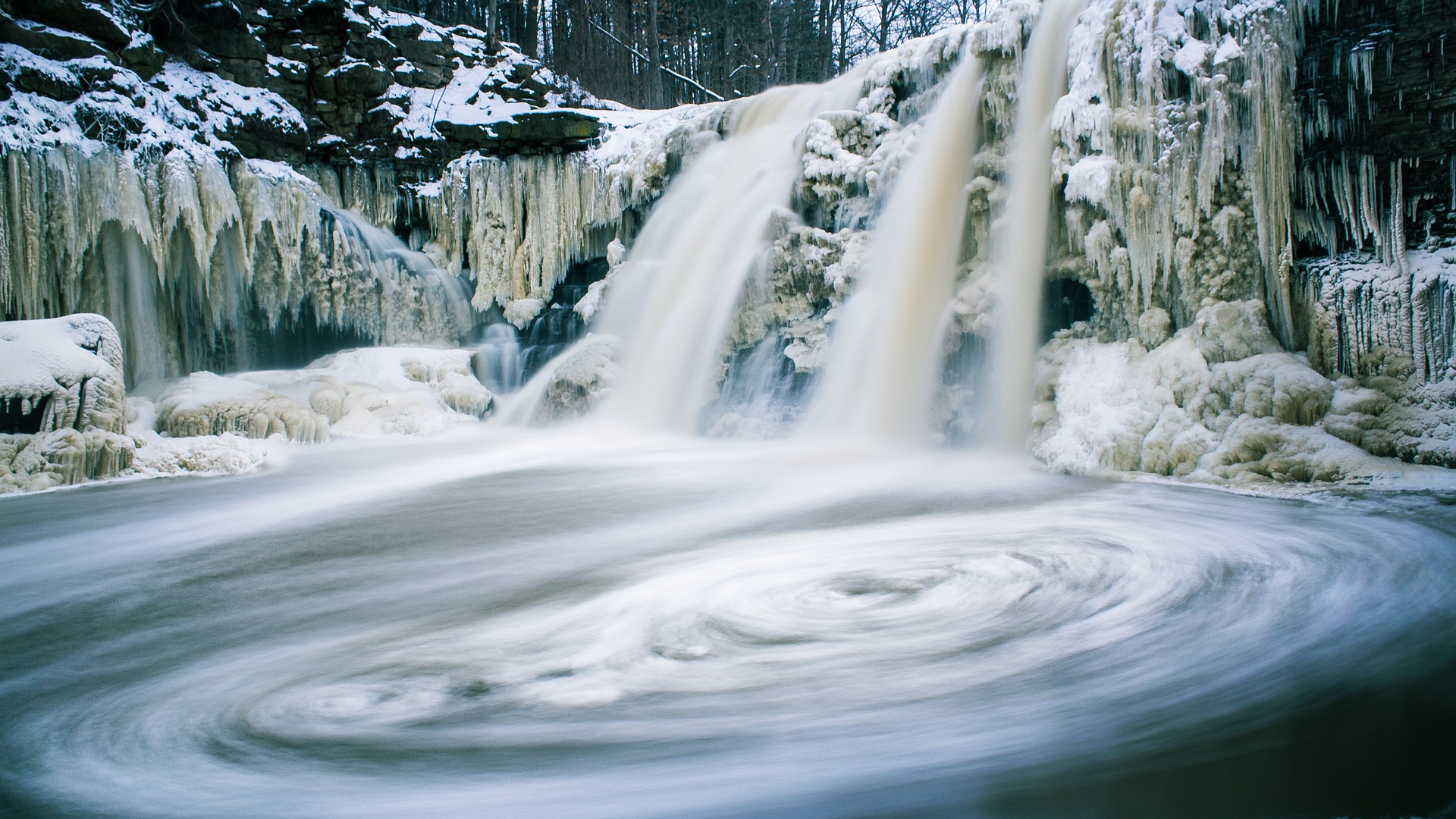How do waterfalls freeze?
 Ice forms on still bodies of fresh water like lakes when the temperature hits 0 degrees Celsius (32 degrees Fahrenheit) or below, but the physics of freezing becomes a lot more complicated in moving water. Waterfalls don’t immediately stop flowing and freeze over when the temperature plummets to freezing point.
Ice forms on still bodies of fresh water like lakes when the temperature hits 0 degrees Celsius (32 degrees Fahrenheit) or below, but the physics of freezing becomes a lot more complicated in moving water. Waterfalls don’t immediately stop flowing and freeze over when the temperature plummets to freezing point.
Quite the opposite, in fact. For a start, because the moving water is constantly mixing, the entire waterfall will cool uniformly, so it will take far longer for any noticeable change of state compared with still water under the same conditions.
The temperature of the water in the river/stream and waterfall it supplies drops slightly below freezing and supercools, which causes the water molecules to slow and begin to stick together to form solid particles of frazil ice. These are tiny discs roughly one millimetre (0.04 inches) in diameter, yet this is enough to start the freezing process.
The frazil ice discs will clump together when they come into contact with one another, as well as sticking to nearby surfaces. In the case of waterfalls that flow down the face of a cliff, the discs will accumulate against the cold rock, while for a free-falling waterfall, ice will cling to the overhang.
Eventually the frazil ice will form an anchor from which it will grow and, provided the temperature of the water is sufficiently cold enough for long enough, it will create a column that runs the length of the waterfall. Over time, the river or stream will completely freeze over leaving an icy snapshot of the waterfall, eerily frozen in time.
For more science and technology articles, pick up the latest copy of How It Works from all good retailers or from our website now. If you have a tablet or smartphone, you can also download the digital version onto your iOS or Android device. To make sure you never miss an issue of How It Works magazine, subscribe today!




